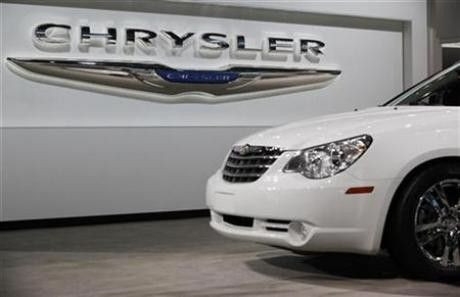GM, Chrysler reorganizations undermined legal principles: Experts

It would not be denied that the bankruptcies of automakers General Motors (GM) and Chrysler were two of the largest in the U.S. history pegged at $83.5 billion and $39.9 billion, respectively.
In 2009, Chrysler emerged from bankruptcy under the management control of Italy's Fiat SpA and GM came out of bankruptcy in July 2010, only after the federal government agreed to a $17.4 billion bailout for GM and Chrysler. The government also agreed to invest about $7.5 billion in GMAC and Chrysler Financial LLC.
Last week, GM reported $2.2 billion quarterly profit, its third consecutive quarter of profitability and positive cash flow for the three months ended Sept. 30 and expects profitable year-end results for calendar 2010. On the other hand, Chrysler incurred a loss of $84 million during the past three months has raised its annual profit forecast to $700 million.
Meanwhile, two University of Illinois experts in bankruptcy law are saying that the legal principles applied in the bankruptcy reorganizations of GM and Chrysler were misguided, and have ultimately undermined the distributional norms of bankruptcy reorganizations.
It would be slightly less troubling if GM and Chrysler were just political aberrations, and could be viewed by courts as byproducts of the extraordinary economic and political pressure of preventing two-thirds of the American automotive industry from disappearing, law professor Charles Tabb said. But that's not the case. These types of bankruptcies have been happening for some time; Chrysler and GM just brought it to the forefront.
A consumer advocate Ralph Nader wrote to President Obama recently, urging him to delay a planned initial public offering (IPO) for General Motors in which the automaker is reportedly planning to raise over $10 billion through sale of common shares.
Traditionally, a bankrupt company might use Chapter 11 of the Bankruptcy Code to reorganize its business and try to become profitable again. Management continues to run the day-to-day business operations but all significant business decisions must be approved by a bankruptcy court.
Following the bankruptcy filing, the U.S. Trustee, the bankruptcy arm of the Justice Department, will appoint one or more committees to represent the interests of creditors and stockholders in working with the company to develop a plan of reorganization to get out of debt. The plan must be accepted by the creditors, bondholders, and stockholders, and confirmed by the court.
However, in GM and Chrysler's case, the reorganization was done not by plan, but by sale.
Law experts warn that the Chrysler and GM bankruptcies both illustrate that there's no clear distinction between reorganization by plan and reorganization by sale.
The acute danger this presents is that a nominal sale structure could be used to effectuate a purely internal boot-strap reorganization, another law professor Ralph Brubaker said. That would distribute the value of the reorganized debtor entity among creditors in a manner that contravenes their relative priority rights in the debtor's assets.
One of the big risks is that insiders could put deals together for their own benefit and take value in a company away from the stakeholders who have a superior entitlement to them, according to Tabb.
The cumulative effect of the Chrysler and GM bankruptcies essentially erases the foundation of positive law that has been in existence for at least a century, while simultaneously heralding the death of the fundamental distributive principles that are the essence of bankruptcy law, according to the article, published in the University of Illinois Law Review.
Positive law may be characterized as law actually and specifically enacted or adopted by proper authority for the government of an organized jural society.
When examined from a historical perspective, what transpired in the GM case - and what the Second Circuit's Chrysler opinion sanctions - was precisely what the Supreme Court prohibited in a series of decisions dating back to the late 1800s, the professors say.
Those decisions ultimately formed the basis for Chapter 11's codification of creditors' priority rights in corporate reorganizations.
What we're dealing with in bankruptcy is the ultimate satisfaction of creditors' claims, Brubaker said. So it goes back to a very basic question of what payment rights do creditors have when there's not enough money to go around.
The experts argue that in bankruptcy proceedings the very nature of Chapter 11 along with the adversarial system of the justice system tends to elevate so-called extraordinary and exceptional relief, which can be filed when there is no other plain, speedy and adequate remedy available to a person.
You could credibly paint every major corporate bankruptcy as an emergency to some extent, Brubaker said. In GM and Chrysler, there's no bad guy you could point the finger at and blame. It's the context for this sort of thing to happen without anyone really being at fault or nefarious.
© Copyright IBTimes 2024. All rights reserved.





















